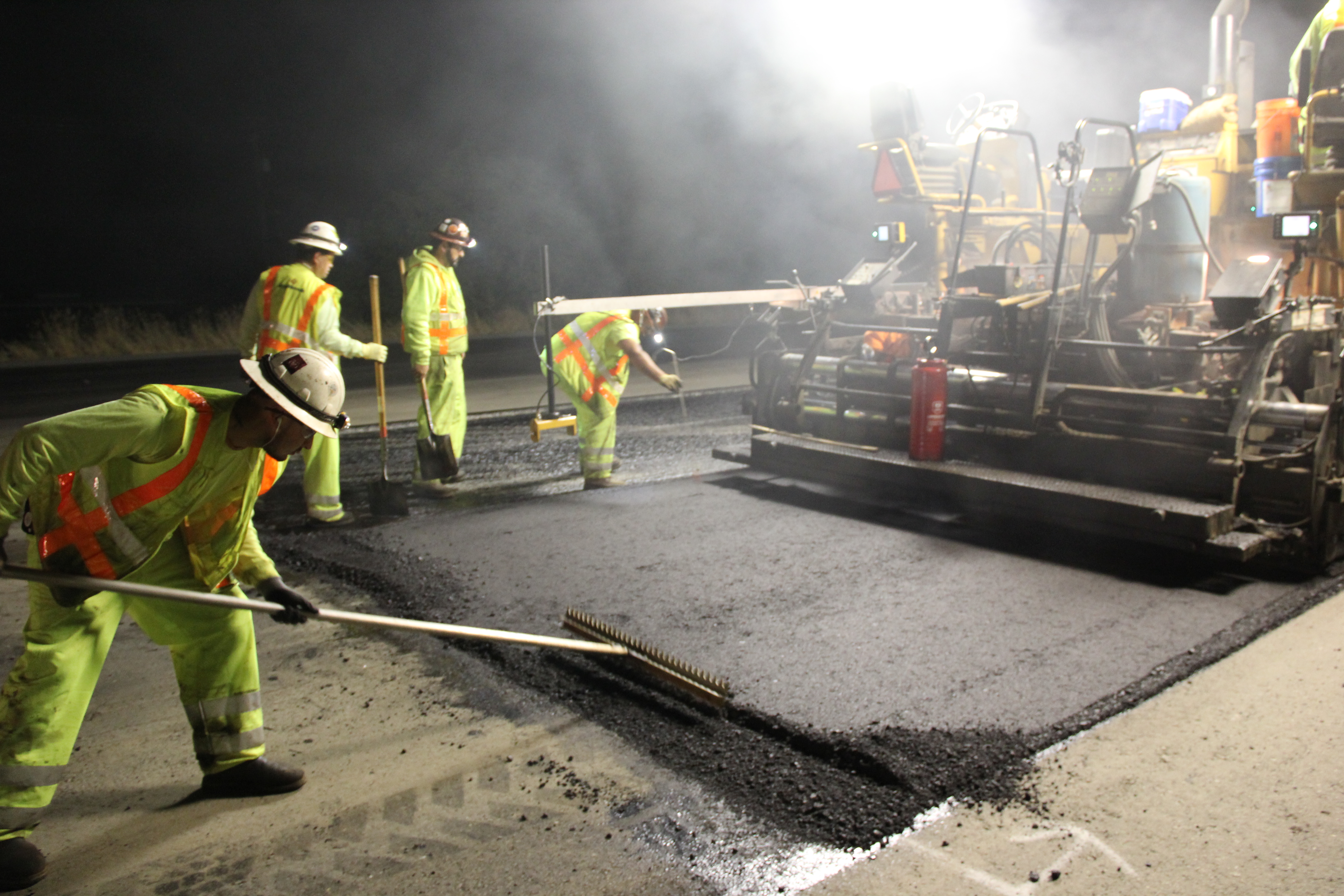
Caltrans and industry work together to improve Section 39
Posted by Mike Cook on Mar 1, 2016
Over the past few years, Caltrans has worked on a major overhaul of the Section 39 specification for producing and placing hot mix asphalt on state roads.
The idea behind the change was to bring California more in line with national asphalt standards and to produce more consistent and accurate test results.
But when the new Section 39 changes first showed up in paving contracts, it quickly became apparent that some aspects of the new specification were not truly “street ready,” which led to a number of headaches for contractors, suppliers and Caltrans.
Difficulties with smoothness specifications, intelligent compaction and the new test for rutting are some of the areas that have been a struggle.
Tests for rubberized asphalt have also been problematic because national standards for these types of mixes on some of the prescribed testing equipment, such as the gyratory compactor, do not exist.
In short, inadequate lab and field trials prior to implementing the changes, to prove out the feasibility of the new specifications, have presented major and sometimes costly challenges for contractors and suppliers.
The work necessary to make Section 39 viable is ongoing, but we’ve got a rough road ahead before there’s a winning solution for Caltrans and the construction industry.
Industry representatives and Caltrans officials have recognized the need for improving the process of specification development and have formally committed to a collaborative effort in 2016 to make things better.
There are three critical items industry and Caltrans agreed to address in 2016 :
1. Specification readiness: There have been several problems with the premature release of asphalt specifications. Like any consumer product, it is critical that an asphalt product be thoroughly tested before it’s released. This year, Caltrans and industry representatives will review the entire specification development process to ensure improved tactics are used so new asphalt specifications are proven to be feasible before going into effect. This review includes looking at how the scope of the work for a specification is developed, how the specification will be tested, and how to consistently address unforeseen flaws that may arise despite the best efforts to address all potential issues in advance of implementation.
2. Uniform application: It’s common for individual Caltrans districts to interpret or enforce specifications differently from each other, which can create unnecessary confusion and cost for contractors. It is important for Caltrans engineers to have some discretion in the field to handle site specific issues that may require modifications. However, when changes are instituted without a sound engineering basis because of a field engineer’s preference, the contractor is the one who typically ends up eating the cost. This problem has existed for a long time and has grown worse in recent years with the changes to Section 39, as field engineers grapple with both the novelty and, in some cases, lack of readiness of the specification.
3. Measure specification performance: An ongoing issue for Caltrans’ pavement construction is lack of adequate performance records to measure the effect of specification changes. Without documenting performance, it is impossible to know whether a specification change improves or worsens the final product. The lack of information in which some decisions must be made about new specifications can lead to wrong choices. It’s likely some existing provisions within Section 39 don’t add value. But without sufficient data about performance, those provisions remain in place.
It is critical for Caltrans to improve Section 39. Since local agencies often adopt Caltrans practices, the problems and contract issues we’ve seen with Section 39 will go far beyond Caltrans. Indeed, they may even reach into private work.
No one has extra money to spend on infrastructure, so the state and industry need to pull together to get the right answers for Californians. Taxpayers are more inclined to support infrastructure improvements when they’re confident the work is getting done the right way.
Graniterock is actively involved in these improvement efforts, and hopes to see Section 39 do what it was designed to do: builder better, stronger roads for California's future.
You can contact Mike Cook at [email protected].
Back to all Blogs
